.png)
.png)
In the fast-paced tech world of 2025, independent tech contractors – from software developers and data engineers to DevOps specialists and QA analysts – are thriving as self-employed professionals. Going independent offers the freedom to choose projects and clients globally, but it also raises questions: Where do you find quality tech projects? How do you ensure steady work, fair pay, and hassle-free collaboration across borders? This is where tech marketplaces come into play. In this comprehensive guide, we'll explore the rise of independent tech contracting, what tech marketplaces are, the major platforms (global and regional) available, and how these platforms cater to the needs and pain points of contractors and hiring managers alike. We'll also share insights, quotes, and tips to help you navigate this landscape effectively.
.png)




The shift towards independent contracting in tech has been dramatic. Nearly half of the workforce is now engaged in freelance or contract work in some capacity – 46.6% of workers, up from 39% just a year before. This surge is fueled by both worker preferences and industry demand. In the United States alone, 73.3 million people freelanced in 2023, and that number is climbing toward 76+ million by 2024. Globally, the gig economy surpassed $455 billion in value, growing many times faster than traditional employment.
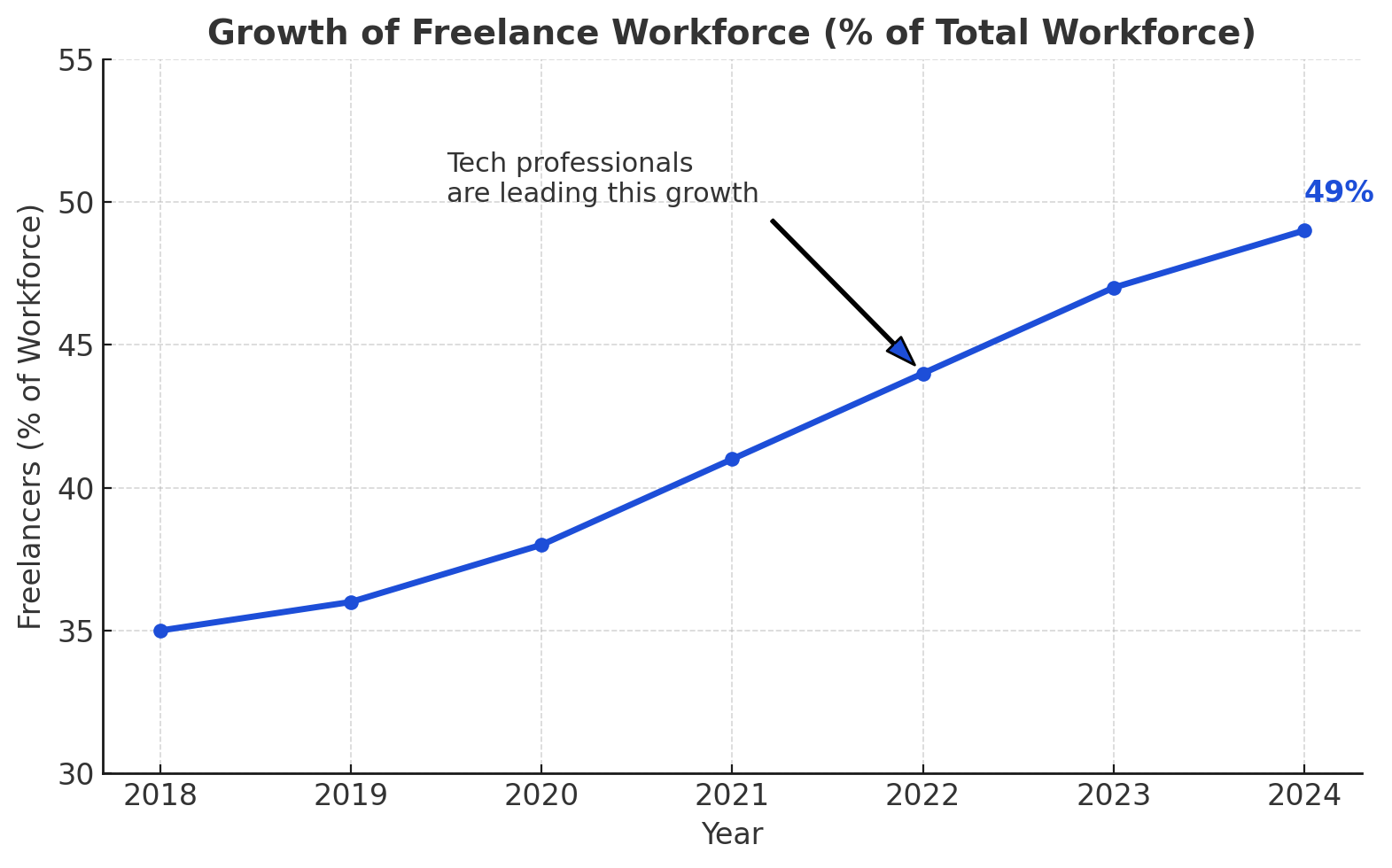
Tech professionals are at the forefront of this freelance boom. Programming and IT roles are among the most in-demand skills in the freelance market. With remote work becoming mainstream, companies have grown comfortable hiring talent from anywhere. In fact, 90% of businesses are now using freelance platforms as a key part of their talent strategy, tapping into specialized expertise on demand. This means more opportunities for independent developers, data scientists, UX designers, AI engineers, and other specialists to find rewarding gigs outside the confines of a traditional 9-5 job.
Importantly, many who go independent are finding it rewarding. Surveys show over 80% of freelancers are satisfied with the freelance lifestyle, citing flexibility and career growth. 60%+ say they earn more than they did in their previous full-time jobs. Work-life balance is a major draw – about 70% choose freelancing for better work-life balance. These trends underscore why becoming an independent contractor is an attractive path for tech professionals in 2025.
However, freelancing also comes with challenges. A top struggle reported by 73% of freelancers is finding new clients consistently. Additionally, 50% have experienced not getting paid on time or at all, highlighting the risk of working with unknown clients. Navigating contracts, cross-border taxes, and isolation are other common pain points. This is where tech marketplaces aim to solve the puzzle – by connecting freelancers to clients and providing a secure, structured environment for collaboration.

The largest freelance marketplace, covering every industry including a huge number of software, IT and data science jobs.
Pros: Massive client base and variety of projects; supports both hourly contracts (with time tracking) and fixed-price projects with escrow. Upwork handles global payments and offers payment protection for hourly work (tracked via their app).
Cons: High competition – millions of freelancers worldwide bid for work, which can drive rates down for commodity skills. Also, Upwork charges a 20% fee on earnings, though this tiered fee drops to 10% after you bill a single client $500+. Despite the fees, many developers use Upwork because it “takes the hassle out of finding clients,” as NerdWallet notes, letting you focus on deliverables instead of chasing leads.
2. Freelancer.com (Global/Australia-origin)

A large, longstanding marketplace similar to Upwork in its open bidding system.
Pros: Easy for newcomers; you can bid your own price on projects, and there are paid membership plans to increase visibility.
Cons: The platform fee is about 10% of earnings, and like Upwork, it has a high volume of low-budget gigs alongside quality ones – finding the right projects can take effort. Freelancer.com is widely used internationally (it’s popular in India and Australia as well) and is a good starting point to build a freelance reputation, though many eventually graduate to higher-end platforms or direct client relationships.
3. Fiverr (Global)
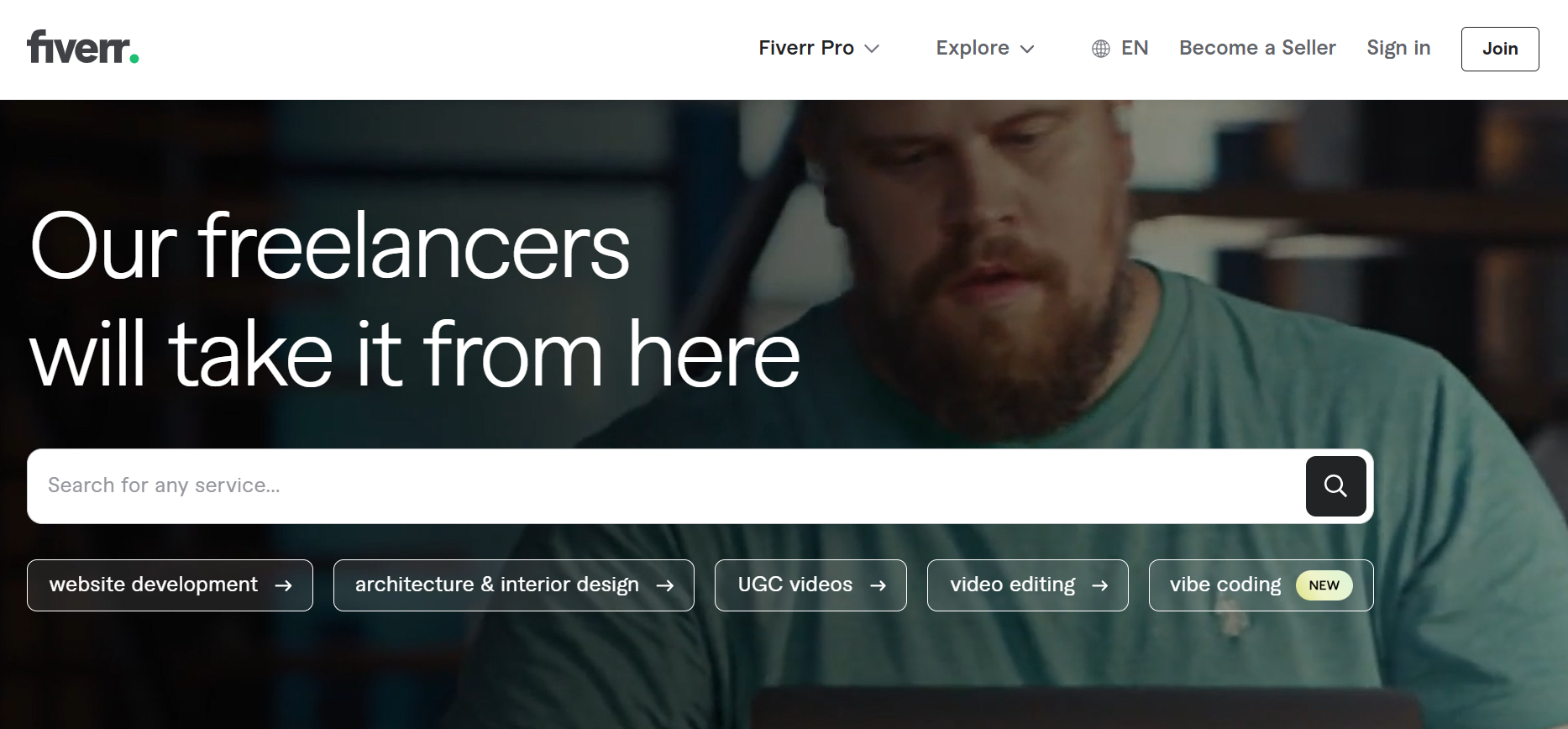
A gig-focused marketplace originally known for $5 jobs, now evolved into a platform for freelance services at various price points. On Fiverr, freelancers (called "sellers") create service packages ("gigs") that clients can directly purchase – flipping the script from bidding on posted jobs.
Pros: Great for productized services and quick-turnaround tasks (e.g. setting up a WordPress site, doing a UX review). You set clear scopes and prices for packages. Fiverr handles client payments and invoices automatically, so you never have to chase a client for funds.
Cons: Fiverr charges a flat 20% commission on earnings. The marketplace is also very crowded; success often requires strong marketing of your gig and accumulating positive reviews. Top Fiverr tech freelancers like specialized game developers or blockchain experts can do well, but new sellers may need to start with lower prices to build a reputation.
4. Toptal (Global)
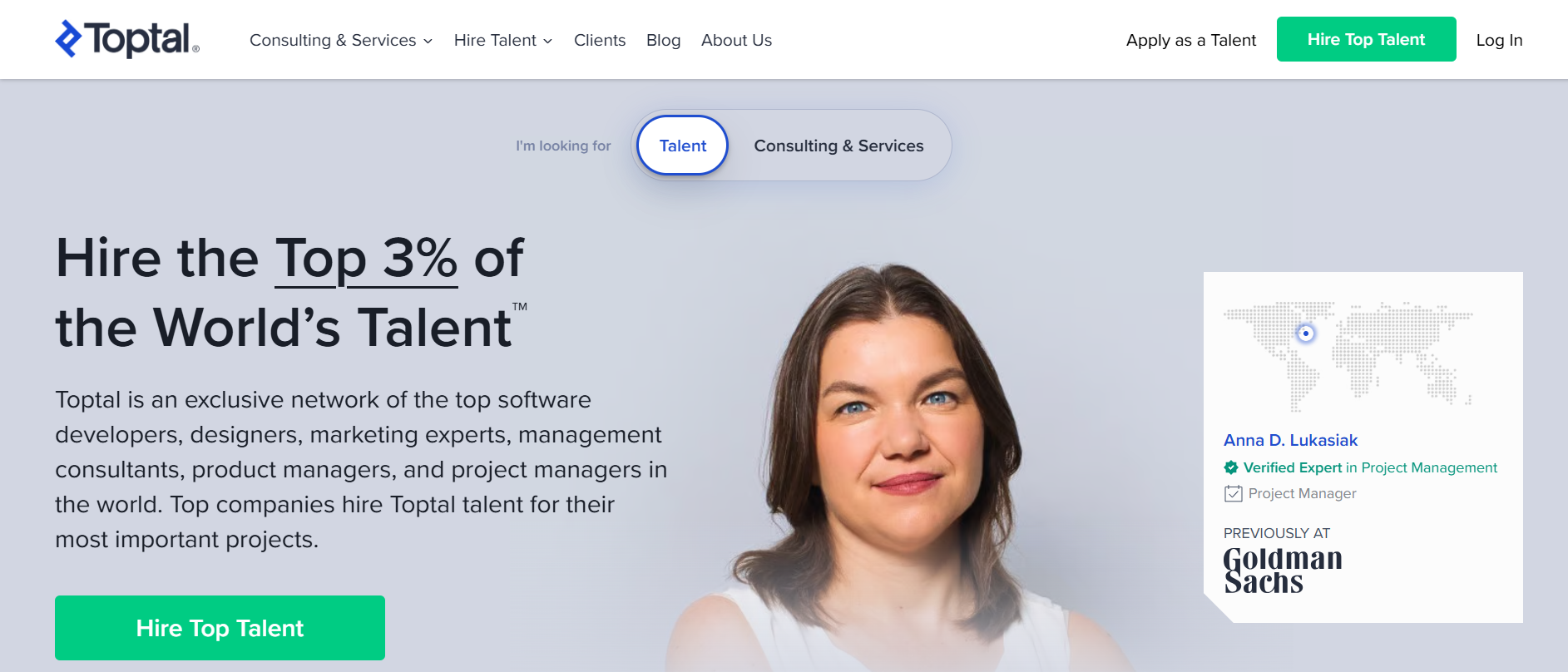
A premium talent network that markets itself as providing the top 3% of freelance talent in software development, design, and other fields.
Pros: Toptal offers high-quality clients and projects – companies from Airbnb to JPMorgan have used it. Crucially, Toptal takes no cut from freelancer earnings. Instead, they bill the client a markup on your rate. Rates on Toptal are often $40–$100+/hour for software developers, and clients are vetted (they even pay a deposit to post a job), so you won’t find fly-by-night clients here. Once you’re in, the platform handles matching you with projects, and clients generally trust your skills (no endless re-interviews or free sample work) since Toptal’s screening is rigorous.
Cons: That very screening is the main hurdle – only a small percentage of applicants pass. The process can take 2-5 weeks and involves multiple interviews, tests, and even a trial project. For seasoned developers, however, the effort can pay off in reliable, well-compensated work.
5. WorkWall (Global Tech Marketplace)
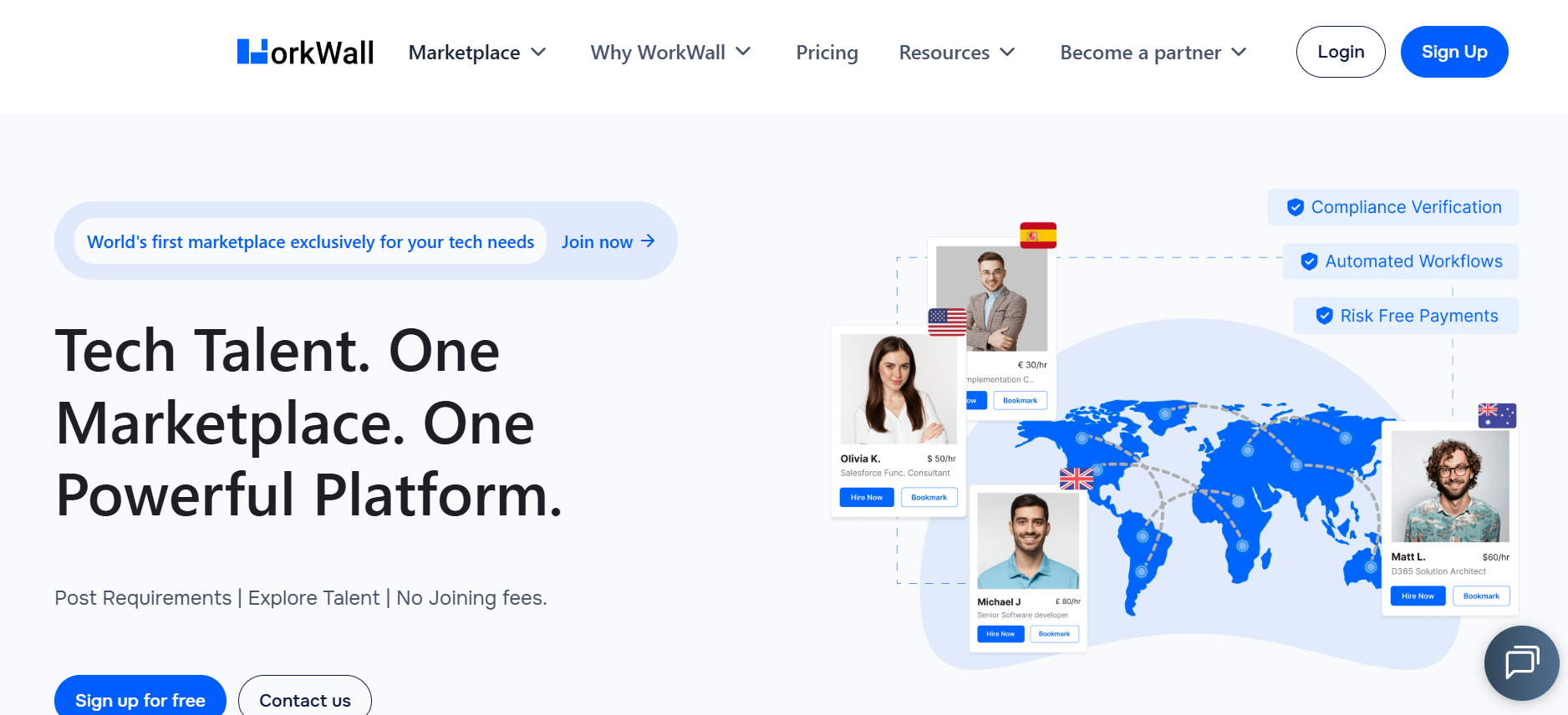
An emerging platform that deserves note is WorkWall – a marketplace specifically built for tech firms, agencies, and independent talent to collaborate globally.
Pros: WorkWall positions itself as a **“global tech talent marketplace” connecting clients to tech resources and agencies across the globe*. It’s designed not just for individuals but also for tech agencies and teams to find projects and even share talent. For example, a tech consulting firm with a few idle developers can lend those resources to another company via WorkWall, optimizing utilization and revenue. WorkWall emphasizes compliance and efficiency: enterprises can outsource contractor sourcing to WorkWall to boost compliance and cost-efficiency, and features are provided to automate tax documentation and contract management for every engagement. Essentially, it aims to be a one-stop solution for finding work, hiring talent, and managing all the admin details in a globally distributed tech workforce.
Cons: As a newer platform, WorkWall is still growing its network; contractors and agencies may need an invite or approval to join the marketplace initially as it builds out verified users. Keep an eye on it as an example of how tech marketplaces are evolving to serve both freelancers and companies in a more integrated, collaborative way.
6. Braintrust (Global)
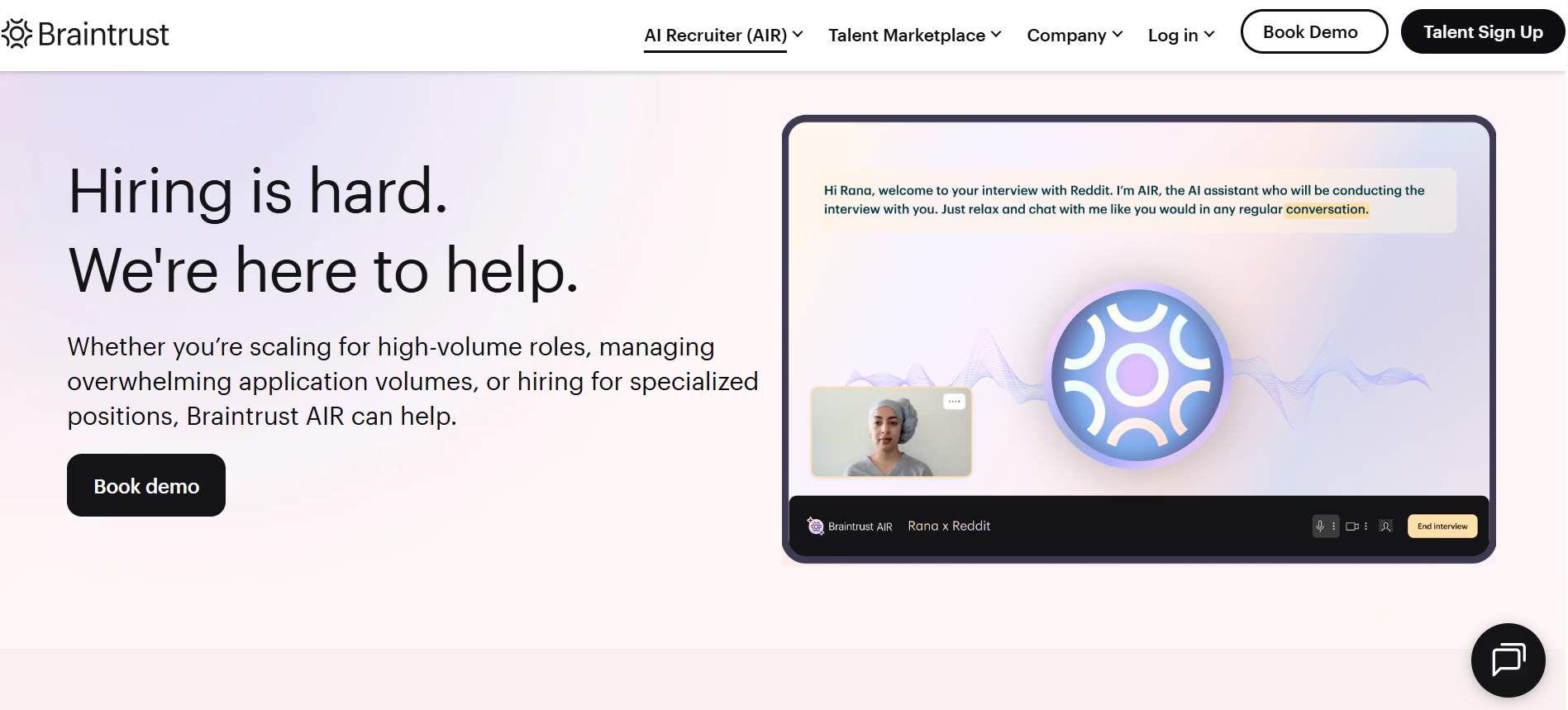
A newer entrant (launched 2018) that is gaining traction, Braintrust is a decentralized talent network for tech.
Pros: It’s fee-free for freelancers – you keep 100% of your rate, and clients pay a 10% fee instead. Rates on Braintrust tend to be high (often $50–$150/hr and the platform has attracted big-name clients (NASA, Nike, etc.). Braintrust also has a unique model where talent can earn cryptocurrency tokens (BTRST) and even vote on platform changes.
Cons: It’s selective; you go through vetting (profile reviews, interviews, maybe a coding test) somewhat like Toptal, and the network is still growing – meaning fewer total jobs than older platforms. That said, it’s an emerging option worth watching, especially for those who want a say in the community’s direction.
As you can see, independent tech contractors have no shortage of platforms to engage with. 70% of freelancers find most of their work through online marketplaces, so it pays to familiarize yourself with these options. Many freelancers use a combination: for instance, start on Upwork to get a few projects, then move to a higher-end network like Toptal or Flexiple once experienced, while occasionally taking direct gigs and managing them via Deel for compliance. The key is finding what mix works for your skill level, income goals, and preferred way of working.
With so many platforms available, one might wonder: what are they doing to attract contractors? In a word, features. The best tech marketplaces offer tools and services that directly address the pain points of independent contractors. Here’s how modern platforms are catering to your needs and why many freelancers are happy using them:

Marketplaces make it simple to get started by guiding you through creating a profile or résumé that showcases your tech skills, work history, certifications, and portfolio projects. Many platforms let you take skill assessments or upload credentials (e.g., Upwork’s skill tests or LinkedIn certifications) to bolster your profile. A solid profile increases your visibility to clients browsing for talent. On curated platforms, onboarding might include interviews or tests – while intensive, this vetting ultimately benefits you by matching you with fitting projects without you having to prove yourself for each new client. As one freelancer puts it, “Because I was technically vetted by the platform, clients usually don’t test me again; interviews are mostly to check communication and fit,” describing their experience after joining a vetted marketplace.

A huge draw of marketplaces is the access to a global pool of clients actively seeking tech talent. This beats cold-emailing companies or hunting job boards. Platforms also work to vet clients and filter out bogus jobs. For example, Toptal requires clients to put down a deposit for job postings, ensuring they have skin in the game. Upwork and others show if a client’s payment method is verified and their past hiring history. This screening means you’re more likely to encounter serious business projects and get paid for your work. In other words, the platform serves as a credibility layer between you and the client. Many freelancers find this invaluable – it’s why freelance platforms are now integral to how businesses find talent, providing a level of trust on both sides.
Different marketplaces handle job sourcing differently, and each method caters to different contractor preferences. Open platforms (Upwork, Freelancer.com) allow you to browse hundreds of job postings and submit proposals on those that fit – giving you freedom to choose but also requiring effort to craft bids and compete. Others like Toptal, Flexiple, or 10x Management operate more like talent agencies or matching services: once you’re in, they bring opportunities to you (clients see your profile or a matching algorithm pairs you with projects). This can save time and let you focus on work rather than constant job-hunting. Some sites even have hybrid approaches; Arc.dev, for instance, lets you search jobs and sends you recommendations, and it has an option to fast-track applications if you’re a verified developer. No matter the model, the aim is to make finding the next gig easier – addressing that top freelancer challenge of client acquisition.
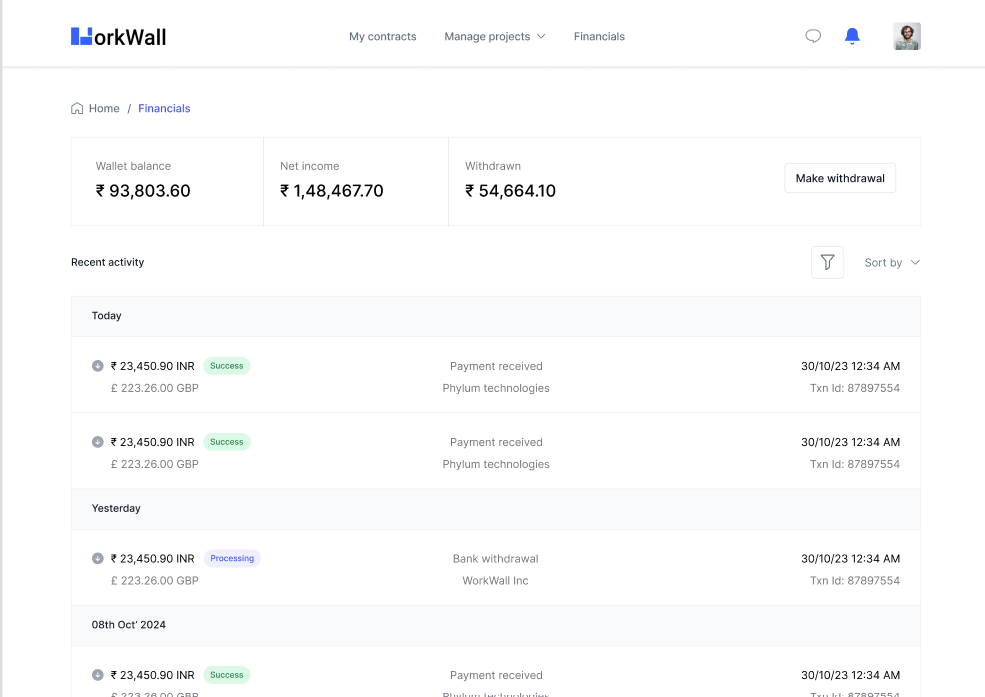
One of the scariest parts of freelancing is, “Will I actually get paid (and on time) for my work?” Tech marketplaces tackle this head-on with features like escrow payments, milestone funding, and hourly payment protection. On fixed-price projects, platforms typically require the client to fund a milestone in escrow before you start work; this money is held by the platform and released to you upon completion, preventing the “vanishing client” problem. For hourly contracts, platforms like Upwork use a desktop time-tracker that logs your hours (with work diary and screenshots) – hours logged according to the rules are then covered by Upwork’s Payment Protection guarantee. That means if a client disappears or disputes unfairly, the platform will still pay you for the logged time, as long as you followed the procedures. This safety net is huge: remember, about half of freelancers have experienced not getting paid on time when dealing off-platform. Marketplaces essentially eliminate that risk. Payment systems are also integrated – you often get to choose how to withdraw your earnings (local bank transfer, PayPal, Payoneer, etc.), and the platforms handle currency conversion, invoicing, and receipts automatically.
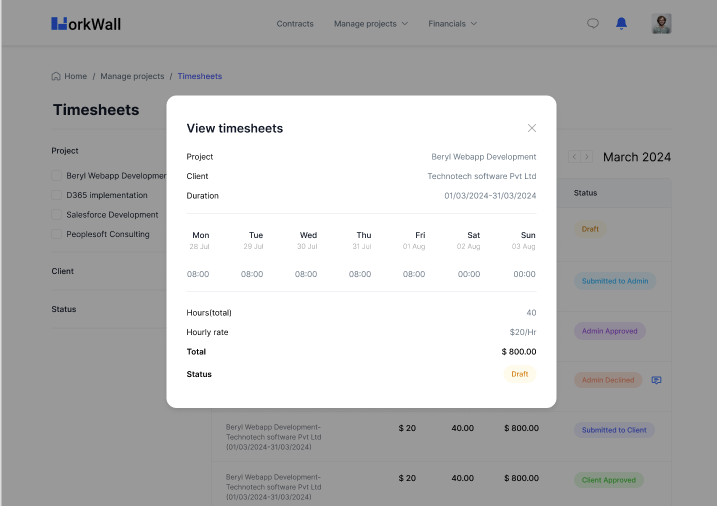
Forget juggling Excel timesheets or tracking invoices – most tech marketplaces provide built-in tools to manage the work process. The moment you start a contract on these platforms, a workspace is created for you and the client. Here you can exchange files, discuss requirements, and update progress. For hourly work, the previously mentioned trackers generate detailed timesheets for the client, so you don’t have to manually create one. Some platforms allow manual time entries too (with client approval). All this means less admin work for you – timesheets and billing are largely automated. Additionally, many platforms send weekly or milestone-based reports and facilitate end-of-project feedback and approvals. If you’re part of a distributed team via the marketplace, you might also get access to team collaboration tools or integrations (Upwork, for example, has a messaging app and integrates with Slack; other platforms might let you invite clients to Trello/Jira boards). These features ensure smoother collaboration, especially when you never meet the client in person.
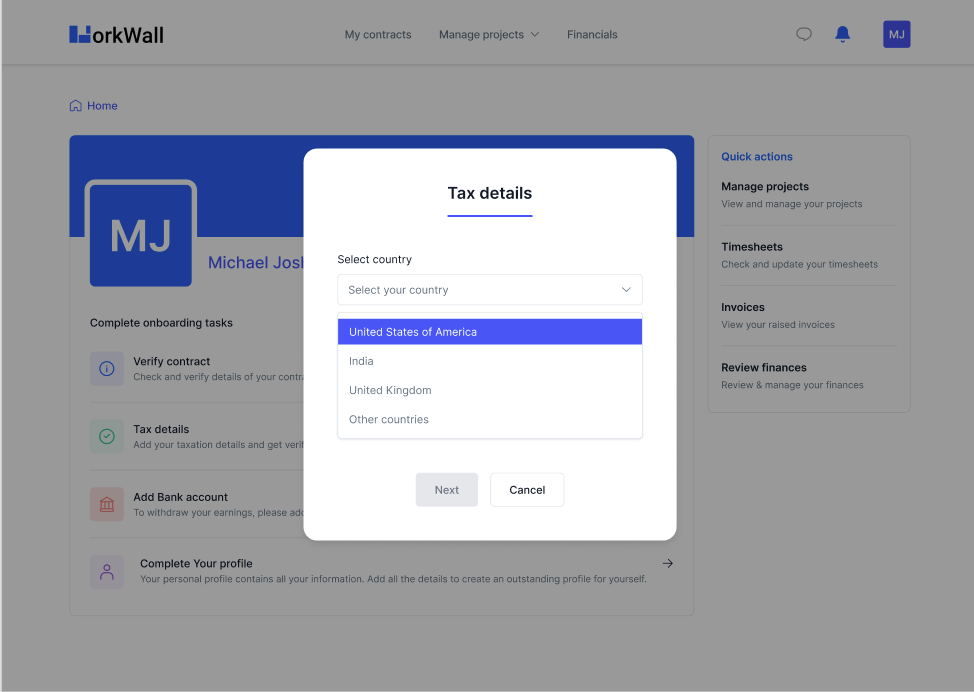
This is a critical but often unsung benefit of good tech marketplaces. When you, say, as an Indian developer, work for a US company directly, both of you have to figure out contracts, tax forms, IP rights agreements, etc. High-quality platforms take care of this automatically. They generate a standard contract that both parties agree to through the platform, covering IP ownership, confidentiality (many have built-in NDAs), and work terms. They also handle region-specific tax documentation – for instance, collecting W-8BEN forms from non-US contractors so US clients don’t have to withhold taxes, or sending you annual earning summaries for your local tax filing. Some platforms go even further: Deel, for example, partners with legal experts in 150+ countries to ensure compliance with local labor laws, automating everything from localized contracts to tax filings. Similarly, WorkWall highlights features to “ensure compliance, automate tax documentation, and simplify contract management” for global tech engagements. This means as a contractor you can take on a gig with a company halfway across the world without needing a lawyer – the platform has done the heavy lifting to make it legally sound. For tech team leaders hiring freelancers, this is a godsend too: it removes a huge layer of friction and risk from engaging talent globally.
While contractors naturally dislike platform fees, most accept them as the cost of using the marketplace – if the value is clear. Platforms are increasingly transparent about their fee structures and many are moving to more freelancer-friendly models. We saw that Upwork uses a sliding fee (20% -> 10% -> 5%) to reward long-term client relationships, Guru goes as low as 5% for top tiers, and platforms like Toptal, Flexiple, and Braintrust charge zero fees to talent (they monetize on the client side). This trend is making contractors happier: you keep more of your earnings compared to earlier days when 20% flat cuts were standard. Also, with competition among marketplaces, many offer perks – for instance, Connects (bidding credits) on Upwork can be earned or are free to Plus members; PeoplePerHour’s free 15 proposals a month gives a no-cost way to try it. Knowing the fee upfront and seeing it decrease with success encourages freelancers to invest their time in a platform.
A big advantage of using a marketplace is the ability to build a verified reputation over time. After each project, clients typically leave a rating and review of your work, and you can do the same for them. These reviews accumulate on your profile, effectively becoming a track record of proven experience. For example, if you maintain a high Job Success Score on Upwork or a 5-star rating on Fiverr, you’ll attract more (and better) clients without much effort – social proof goes a long way. This system also gamifies quality: independent contractors have incentive to deliver great service, and clients have accountability through feedback as well. Over time, your profile can start to speak for itself, bringing in invite-only jobs or direct offers from clients who see your history. In essence, the marketplace helps turn your portfolio and work history into a tangible asset that wins you more work. Tech team leaders appreciate this too – those reviews give them confidence when selecting from hundreds of profiles.
Freelancing can feel isolating, but good platforms foster community and support structures. Many marketplaces have forums or community spaces where freelancers share tips and experiences. Upwork has a community hub and Top Rated webinars; Toptal organizes meetups and tech talks for its network around the world; some platforms have private Slack or Discord groups for their freelancers. This creates a sense of belonging – you’re not alone, but part of a network of peers. There’s also platform support: if issues arise (payment problems, difficult clients), you can reach out to customer support for help, something you wouldn’t have as a solo contractor off-platform. The difference this makes is notable – one experienced freelancer noted that premium platforms “support their talent better than a low-end freelance site”. That could mean faster support responses, or even dedicated staff (Toptal gives you a talent matcher/agent, and some marketplaces have community managers). All of this leads to a more positive experience, which is reflected in the fact that over 80% of freelancers feel positive about their career growth and future – a sentiment bolstered when you have a safety net and a community backing you.
Finally, tech marketplaces cater to different work preferences. Want to moonlight on a side project for 5 hours a week? Plenty of short gigs exist. Prefer something full-time but still freelance? Many platforms have long-term contracts or even ongoing retainer arrangements. For example, some Upwork or Freelancer clients are essentially hiring for 6-12 month engagements (and Upwork now has a contract-to-hire feature for clients who might transition you to full-time). Marketplaces also allow agency models – a small tech agency or a team of contractors can register and take on bigger projects as a group. Upwork supports agency profiles, and WorkWall is explicitly built for agency collaboration (letting tech firms lend and borrow talent). This means as you grow in experience, you could scale up your solo business into a team or company, all within the marketplace ecosystem. The platforms evolve with your career: many offer premium memberships or special programs for top performers (e.g., Upwork Top Rated and Expert-Vetted statuses, Fiverr Pro, etc.), which open the door to higher-paying gigs and exclusive clients. In short, a tech marketplace isn’t just a one-time gig finder; it can be the infrastructure on which you build a sustainable contracting career.
Let's hear from individuals who have walked this path. Below are a few composite quotes (based on real-world experiences) that capture the journey, challenges, and victories of independent tech contractors using marketplaces:
Alice, Full-Stack Developer (USA): “I was skeptical about freelancing at first. I knew coding, but not where to find clients. I started on Upwork and initially it was tough – I sent 20 proposals before landing my first job. The competition was intimidating. But once I completed a couple of projects and got 5-star reviews, things snowballed. Clients started inviting me for interviews. Upwork’s payment protection also gave me peace of mind; after hearing horror stories of freelancers not getting paid, I appreciated that funds were escrowed. Now I’ve built a steady pipeline of work. Yes, the platform fees sting a bit, but 80% of something is better than 100% of nothing, right?”
Ravi, Data Engineer (India): “I tried some local job boards and even WhatsApp groups to find projects, but most clients offered very low rates. It felt like they saw Indian freelancers as ‘cheap labor.’ Joining a global marketplace changed that for me. On Truelancer and later Upwork, I could pitch to international clients who valued my skills – and paid accordingly. I remember getting my first US client and earning in dollars; it was nearly 3x what a similar project paid locally. Another challenge for me was contracts and taxes – I had no idea how to handle US-India invoicing. Thankfully, the platform auto-generated contracts and later that client moved me to Deel, which handled all the compliance and even gave me the correct tax forms. I’m much happier now; I focus on data pipelines and leave the paperwork to the platform.”
Jane, Senior DevOps Consultant (UK): “After a decade in corporate IT, I went freelance for flexibility. I joined Toptal – the vetting process was intense. Data structure exams, coding tests, multiple interviews… it took me a month of preparation. But once I got in, it was like joining an elite club. In my first year, I made 50% more than my old salary. The clients are top-tier and projects are challenging in a good way. What I love is that Toptal handles the boring stuff: contracts, NDAs, time tracking – none of my clients even asked me to sign separate agreements; it’s all standardized. And I never worry about getting paid on time. The downside? If you’re new or less experienced, Toptal might not be an option – I mentor a friend who’s building up her portfolio on Upwork so she can apply to Toptal later.”
Mark, Engineering Manager (USA): “On the hiring side, our startup needed a machine learning engineer for a 3-month project. We didn’t have time to recruit traditionally (which can take months). I tried posting on a couple of freelance sites. The first site gave me a flood of proposals – filtering them was a job in itself. Then I tried a tech marketplace (a platform focusing on vetted AI talent). The difference was night and day. They presented me with 3 candidates, all with relevant experience and excellent reviews. We hired one within a week. The platform took care of the contract and even ensured we addressed IP rights and compliance. As a manager, that was a huge win – I could plug a skills gap on my team in days, not months, and I didn’t have to navigate international hiring laws; it was handled for me. The contractor integrated seamlessly and used the platform’s time tracker to provide updates. After that experience, our company now uses marketplaces regularly to augment our team for short-term needs.”
These stories highlight common themes: finding good clients, earning fair rates, dealing with competition, appreciating payment security, and the value of platform services in making freelance work viable. Not every platform is perfect – you’ll still find complaints about high fees or bad clients – but as freelancers and companies, we have more tools and choices than ever to make the independent work arrangement successful.
What would the perfect tech marketplace look like for an independent contractor? From our analysis of features and pain points, it would be one that provides:
Many existing platforms hit some of these marks, and as the industry matures, we’re seeing convergence towards this ideal. Independent contractors should be aware of these features and favor platforms that provide them. After all, as a freelancer you are effectively your own boss and your own admin and finance department – but a good marketplace app can offload a huge chunk of that non-billable work.
For developers, engineers, tech leads, and agencies, the gig economy in 2025 offers unprecedented possibilities. Independent tech contractors are no longer outliers; they’re a vital part of the global tech workforce. With nearly 70-75% of freelancers using online marketplaces to find work, it’s clear that these platforms have become the go-to hubs for connecting talent with opportunity. And companies large and small are embracing them to tap into specialized skills on demand, accelerating their projects without the friction of traditional hiring.
As we’ve explored, a tech marketplace can significantly smooth out the freelancing journey – from finding high-quality projects and ensuring you get paid on time, to handling cross-border compliance. The key is to choose the platforms that align with your goals and to leverage their features to your benefit. Build a strong profile, gather feedback, and don’t be afraid to try multiple marketplaces to see where you fit best. For instance, you might land quick gigs on Fiverr or Freelancer.com to build experience, then move up to specialized platforms like Toptal or Flexiple as you hone your expertise. If you run a tech agency, consider platforms that allow agency accounts or dedicated B2B marketplaces like WorkWall that connect firms to projects and even other agencies, expanding your reach.
Finally, keep an eye on the evolving landscape. New platforms and services are emerging that aim to address the remaining pain points of freelance life (for example, offering benefits like insurance for freelancers, or more advanced tools for remote collaboration). The competition between marketplaces means better options for you – lower fees, better support, more gigs – as each tries to attract top talent. The future might even see integrated ecosystems where as an independent contractor you have one dashboard to manage all your gigs across platforms, your finances, your learning, and your networking.
In summary, becoming an independent Salesforce developer, data scientist, DevOps engineer, or any tech contractor in 2025 is an exciting venture. By using tech marketplaces wisely, you can find the projects that inspire you, collaborate with teams worldwide, and build a thriving career on your own terms. The world is literally at your fingertips. So gear up, create that profile, and step into the tech marketplace – your next big project is waiting for you in the cloud.
.png)





Discover Workday's approach to enhancing HR agility, ensuring your organization remains resilient and responsive in today's ever-changing work environment.

Discover how Workday’s reporting and analytics tools can help organizations gain real-time, actionable insights, driving smarter decision-making and business growth.

Explore how Workday is reshaping the ERP landscape with its innovative cloud-based solutions that unify HR, finance, and operations to drive efficiency and scalability.

Planning a Workday upgrade or new rollout? Learn how to build a solid business case that gets leadership on board and secures the resources you need.


Workday is live — now what? Learn how to go beyond "just working" and turn Workday into a powerful growth enabler.

Wondering if your Workday system can keep up as your business expands? Learn how to spot limitations, avoid rework, and scale smarter.

Explore whether your Workday setup can handle fast growth without becoming a tech burden. Practical insights and tips await.

Explore how AI is transforming staffing by creating smarter, faster, and more accurate talent matches that go beyond just resumes.
Stay ahead of the tech curve! Subscribe to our weekly newsletter for a curated dose of the latest industry insights, project highlights, and exclusive updates.